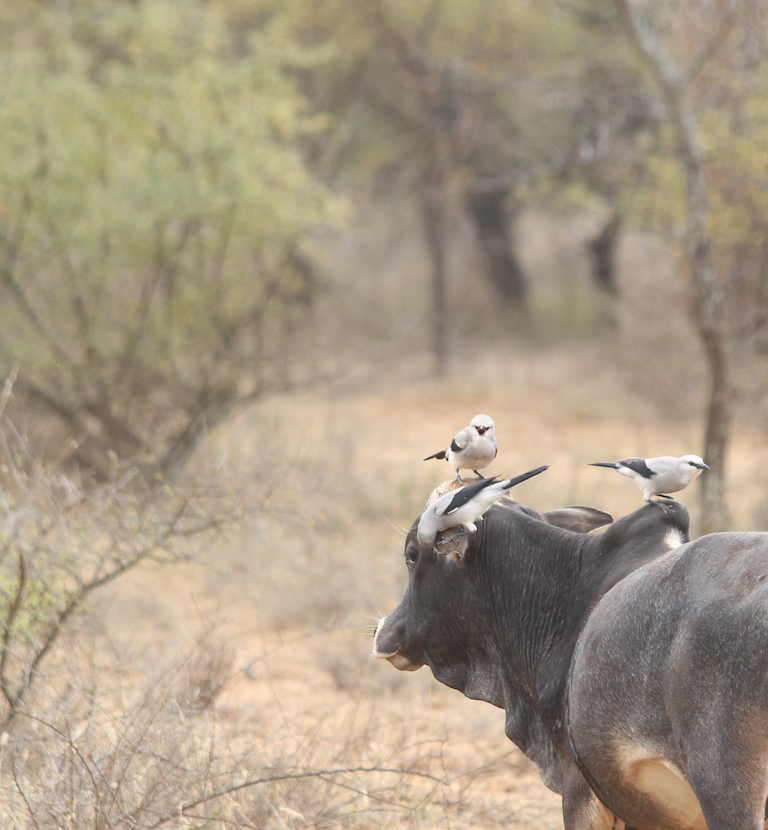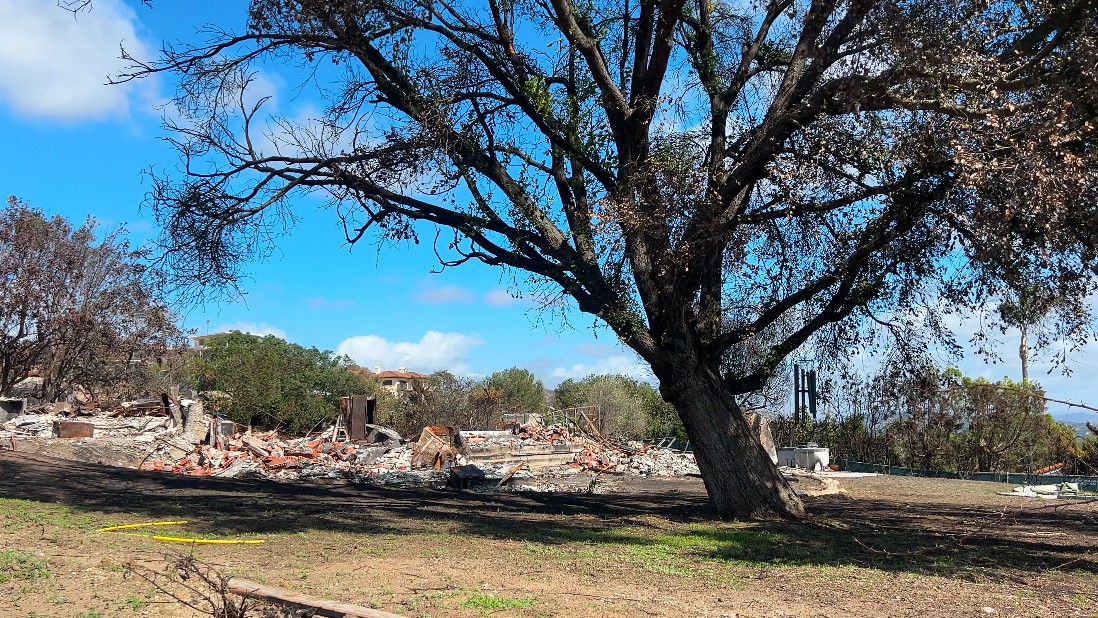(SILVER SPRING, Md.) — In December 2011, Andrew Bladon attended a conference in London that changed his life. Unsure what to focus on for his Ph.D., he wandered into a presentation on rare bird species endemic to Ethiopia — and was hooked.
“It was that perfect combination for me,” recalls Bladon, who now is a researcher at the University of Cambridge studying the impacts of climate and habitat change on species’ distribution. “A species that very little was known about, so there were some interesting ecological questions to ask. But also something that was clearly endangered.”
He traveled to Ethiopia to study the animals in 2012, and 10 years later is sounding the alarm about two vulnerable birds that are found only in the Borana zone of Oromia state in southern Ethiopia.
“Drought affects birds by limiting their water resources. While this seems like an obvious problem in terms of dehydration, it is also a problem for thermoregulation,” Bladon said, explaining the effects of temperature on the birds.
Much has been reported about the deadly effects of climate change-triggered drought across Ethiopia, Somalia, and Kenya. As a result, millions are suffering from severe hunger after three consecutive failed rainy seasons. But humans aren’t the only ones impacted.
From polar bears to monarch butterflies, many species are now on the path to extinction due to climate change-induced disasters. Two of the six birds native to southern Ethiopia are facing such a fate: The Bush-crow, whose population has declined by 90 percent in less than a decade, and the White-tailed Swallow, which has lost 80 percent of its population during the same time.
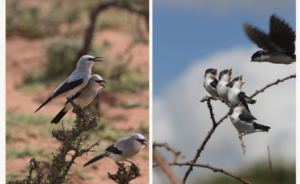
A photo collage of Bush-crows (left) and White-tailed Swallow (right), Borana zone of Oromia, Ethiopia [Credit: Andrew Bladon]
Harmonious coexistence
The Oromo believe all living things are endowed with a special cosmic purpose in the natural world: “Yoo simbirri badde itti aanee loontu bada,” goes a Borana proverb. “If a bird species is gone, cows will be the next.”
Each species has a role in shaping and maintaining biodiversity. An impact on one species has a ripple effect on other ecosystems; it is all interconnected. Oromo cosmology forbids the depletion and exploitation of resources, for it can lead to extinction. In a way, it foretells the fate of the two endangered birds endemic to their region, threatening the survival of their entire way of life.
Jatani Dida is a researcher who has written multiple books on Borana culture, history, and way of life. A native of Borana, Dida believes that a centralized Ethiopian state system has made his community’s time-honored tradition irrelevant.
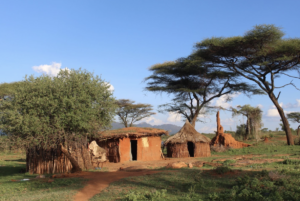
Borana pastoralists huts, Oromia, Ethiopia [Credit: Andre Bladon]
For example, Abbaa Dheedaa, loosely translated as the “custodian of grazing land,” is responsible for managing land use and preventing exploitation. Abbaa Ollaa, on the other hand, is responsible for the neighborhood, including animals and the natural habitat.
“One cannot cut down a tree randomly,” Dida narrated during a recent interview. “There must be a justification through traditional prayer ceremonies, not just to its leaders, but to show respect to Waaqaa, the Oromo God, and nature. Once that is done, cutting is followed by planting [a replacement].”
Jarso Denge, a tour guide at Borana National park, who got a nickname “Jarso Simbire” following working as a research assistant for Bladon, says he has become a local expert on the two birds.
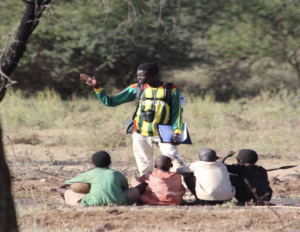
Jarso Denge, a tour guide at Borana National Park, teaching kids about Bush Crow [Credit: Andrew Bladon]
Bladon made three trips to Ethiopia and spent a total of six months watching and studying the effects of temperature on the behavior, breeding, and preservation of the Bush-crow and White-tailed Swallow. Bladon had more success with studying the Bush-crow because they live around people. The birds forage among herds of livestock and their dung, according to Bladon. His team found 35 nests in one season to conduct detailed ecological work. His crew watched and documented hatchings and how the chicks grew — measuring feathers, taking photographs, and recording the habits of the birds.
“Unlike humans, birds cannot sweat but instead use panting to increase airflow over their throat, which helps them cool down. But this method of cooling relies on them having spare water that they can afford to lose,”Bladon said, explaining how drought becomes a dehydration problem for birds in dry, hot regions.
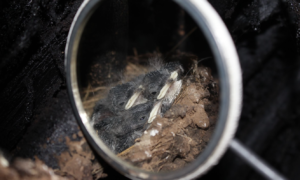
Researchers looking at ten days old White-tailed Swallow using magnifiers [Credit: Andrew Bladon]
The elephants are long gone in the area, but the livestock of the Borana pastoralists have replaced them in their role as grazers by keeping the landscape open and creating ideal habitat for the birds, according to Bladon’s study.
The researchers agree that pastoralism works better for the low-lying Borana land and generates more food security for people. But in the 1990s, the Ethiopian government began a push to diversify people’s incomes and encourage people to take up agriculture and pastoralism simultaneously. Agriculture requires sedentary life for farmers and their animals. Pastoralists are semi-nomadic, moving with their herd from place to place in search of pasture and water. The seasonal movement of people and animals allows the grassland to regrow.
Locals say that this introduction of modern agriculture has weakened an indigenous system that has maintained equilibrium in the Borana land without providing better alternatives.
In addition,Bladon says that top-down government policies scoff at pastoralism and dismiss local land management tradition, introducing infrastructure projects that disrupt local livelihoods and ecological balance.
“There’s a problem of towns spreading and roads being built,” Bladon told the Click. “Obviously, in areas where you build a town, the birds are going to disappear. There is also conversion of land to agricultural fields.”
Bladon insisted that farming should not have been considered since the land is naturally dry and there is not enough rain to sustain intensive agriculture.
“Agriculture might work for a year, but not sustainably,” he said.
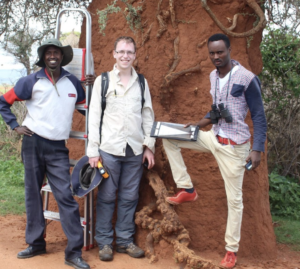
Andrew Bladon (center) and his research assistants in one of the Borana villages when he traveled to Ethiopia to study the birds [Courtesy picture]
This is where local knowledge comes in handy.
Nuguse Waata Nagawo, a warden at the Borana National Park, remembers when farming with big machinery was introduced to the area in 2005. It invited pushback from the community and regional experts, which helped minimize its impact.
For Dida, the policy failure is due to a lack of understanding of local customs and expertise.
“Government representatives come from other places to be in charge of offices, but they do not understand the land, people, and the animals,” he said. “Instead, they are focused on politics and government interests.”
The weakening of natural resource management is one such case.
“You don’t cut a tree if there is a bird’s nest in it,” Dida said. “The Borana says that the tree is the Simbre’s [bird] house. The logic behind it is that you don’t just demolish someone’s house, do you? It is the same. The forest and trees are houses for the wildlife, given to them by God. We respect that. Yes, we have to share, but with fairness.”
The Bush-crow seems to feed off that energy of coexisting. Research shows how Bush-crow is almost like a pet, living close to people. Bladon also found multiple White-tailed Swallow nests in Borana village huts.
“Qaqa (Bush-crow) helps cows by eating fleas off them, and in turn, there are worms that live in cows’ dung and Qaqa consumes those. The benefit is mutual,” Denge said.
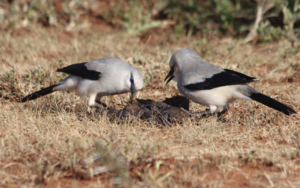
Bush-crows foraging in dung, Borana zone of Oromia, Ethiopia [Credit: Andrew Bladon]
“Where did the Abyssinian name come from?” Nagawo asked. “Indigenous naming is as equally important as the knowledge about the species .”
In recent years, federal officials have become more receptive to the needs of park supervisors, according to park employees who are native to the zone, but a lack of budget and top-down policymaking remains a challenge.
“Pushback from experts and the locals is not falling on deaf ears as it used to be. The officials listen to our concerns, but we are yet to see if it materializes.”
Bladon said a global effort is needed to save these rare bird species that face extinction in 20 to 30 years while also making use of local knowledge as his findings affirm Borana conservation customs and ecological practices.
Locals say the disappearance of the birds will be consequential for the Borana people, who are known for their indigenous knowledge and customary laws that govern human interactions with the physical environment.
“Simbiroon badnaan aadaan badde,” Dida said, meaning, “if birds are gone, culture is gone.” For the Oromo, he added, “existence is communal.”
